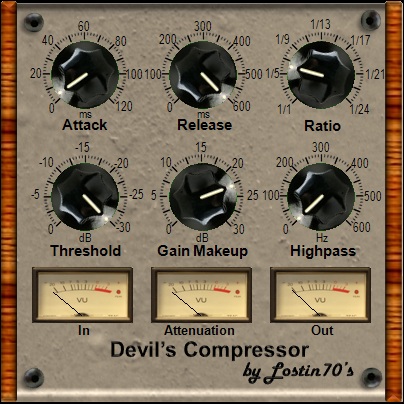Instruments and vocals are very dynamic, meaning they are loud in some places and quieter in others. Compressors affect the dynamic range by raising the lowest levels and lowering the highest levels of a recording. They bring out the quiet parts and compress the loudest, thereby raising the overall loudness. Keep in mind while raising the lowest levels, compressors also raise the noise floor (the sum total of all unwanted audible signals on a recording) and can increase overall noise in a recording or mix.
There are many different types of compressors available for use in recording, mixing and mastering. Compressors can be added to your input signal, side-chained or added after the fact with computer effects. Compressors of some sort should almost always be added to master channels, while a compressor added between your mixer and amplifiers in live situations is another near-must.
Compression is important on vocals and drums, and sometimes on keys, horns and strings, but it is sometimes overlooked on bass and guitar. Though many guitar and bass amps have compressors and many pedal effects have compressors at work in the chain, compressing guitar signals after recording can be helpful depending upon the situation.
In most any case, whether recording, mixing or mastering, don’t overcompress. Compression especially on the master channel or during mastering is important, but don’t buy into the “loudness war.” Music in general sounds better and more natural when it’s dynamic. Many of the recordings mixed and mastered in the last few years as well as older recordings that have been remastered have suffered from overcompression, which robs music of its naturally occurring variations in loudness.
Basic Compressor Controls
Attack and Release are two crucial controls on most compressors. Experiment with them on vocals and instruments. Consider the nature of the instrument or piece. Attack times (which affect how quickly the signal attains full volume) are very important. Drums, pianos and most vocals need fast attacks, while string attack can vary widely depending on the nature of the piece. String pads can benefit from slow attacks (resembling the sound of a dynamically bowed string instrument) while staccato strings may need fast attack. Release time can usually be determined by the instrument or sometimes the tempo of the music.
Threshold is the point at which the compressor takes effect. The lower the threshold the more the signal is affected. The higher the threshold the less the signal is being affected.
Ratio is the dB change in the input signal compared to the output signal of the compressor. So at 2:1 ratio for every 2 dB coming in only 1 dB is output once the threshold is met. After 8:1 to 10:1, the compressor effectively becomes a limiter. A limiter is a kind of compressor that puts a limit on the output sound no matter how loud the input is.
Some General Tips on Compressors
Compressors should usually follow EQs at the front of a vocal chain unless you are using an EQ to boost frequencies. The same could apply to many instruments as well.
Overcompression is the key to most guitar distortion. Compression can be used to distort vocals or other instruments to cool effect.
Try to work with release times in relation to the speed of the music. Faster songs or faster instrumental parts may benefit from faster release times. Longer release times may smooth out signals that fluctuate.
Compression doesn’t begin until the threshold is reached. Play around with the threshold knob to see when it starts compressing by lowering the threshold from full on down. Once you notice the compressor working, try working with the ratio and threshold to get a good clean sound.
Compressors are one of the simplest concepts yet are hardest to understand. I couldn’t begin to fully explain them here, but my advice is to experiment. Record a vocal or an instrument and solo the track. Add a compressor and just work the knobs. Listen as you make changes and see how it sounds. Always take time to listen to the sound both with and without the compression effect to notice changes. You may notice that what you thought was perfect compression has robbed the humanness and dynamics from the original.
In closing: With compressors, as in life, have fun and try new things. Break out of your mold and please never stop trying to find new ways to improve whatever it is you do. Tired of your normal instrument or style of music? Try a new one. What’s the worst that could happen? Until next time, “Keep on rocking in the free world.”














